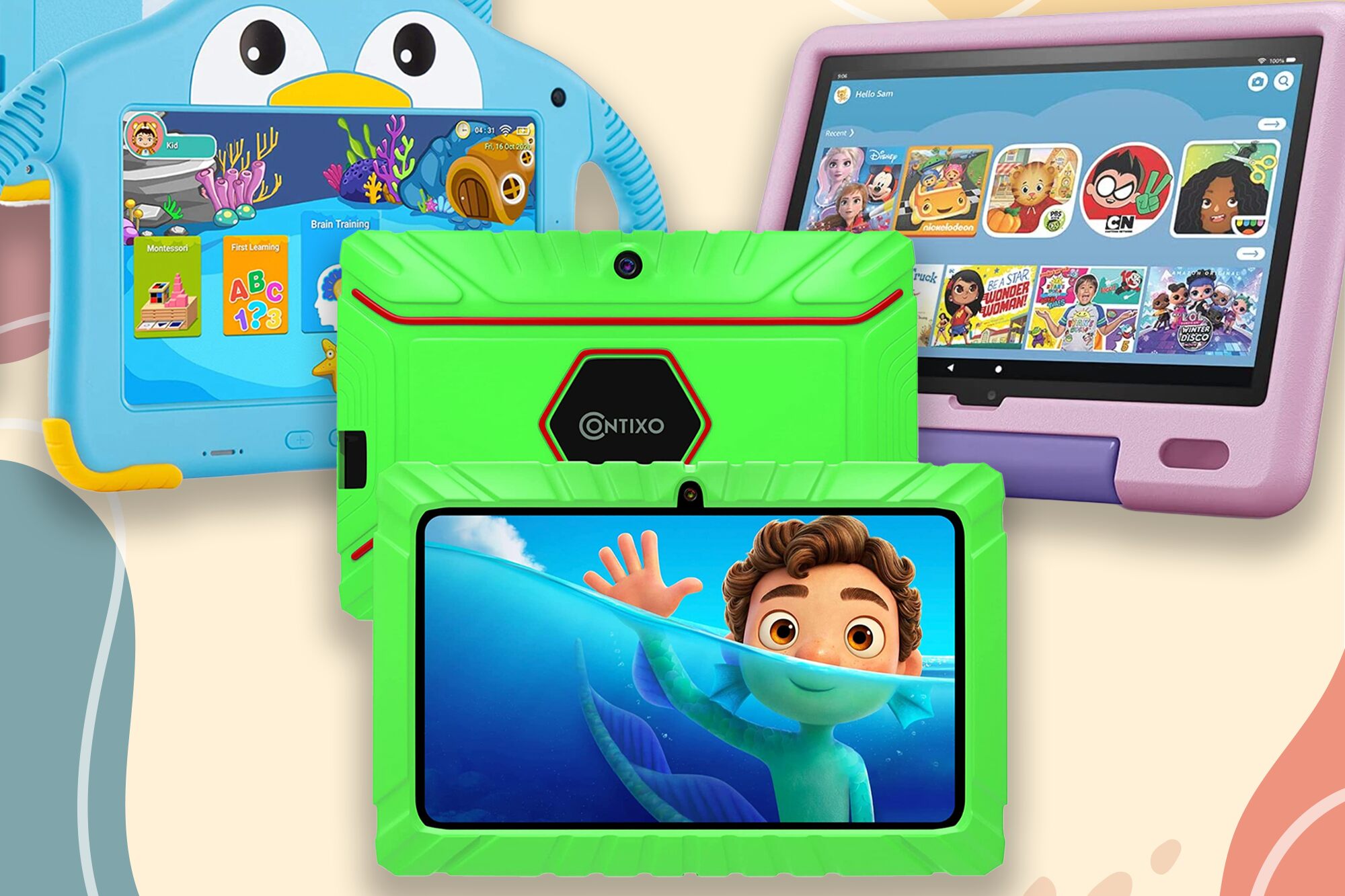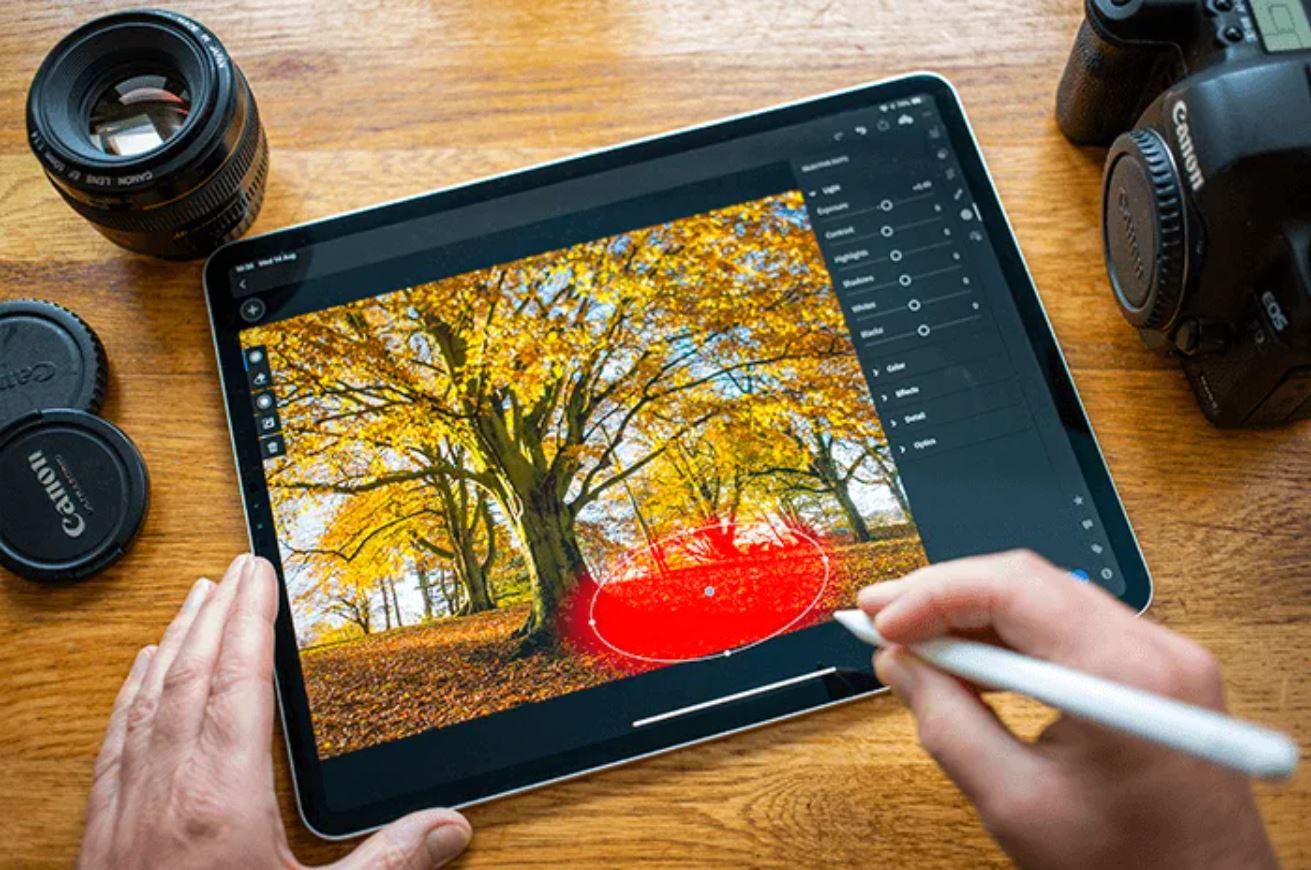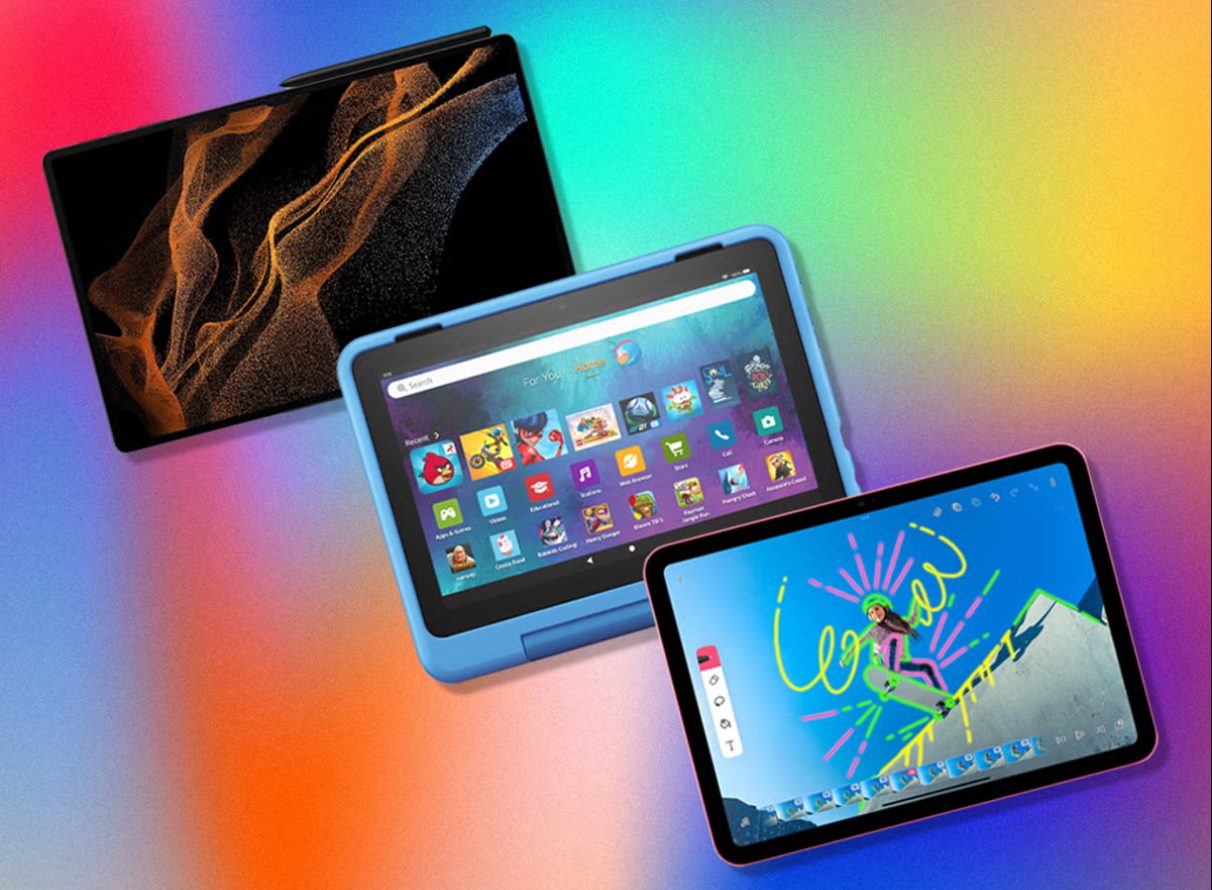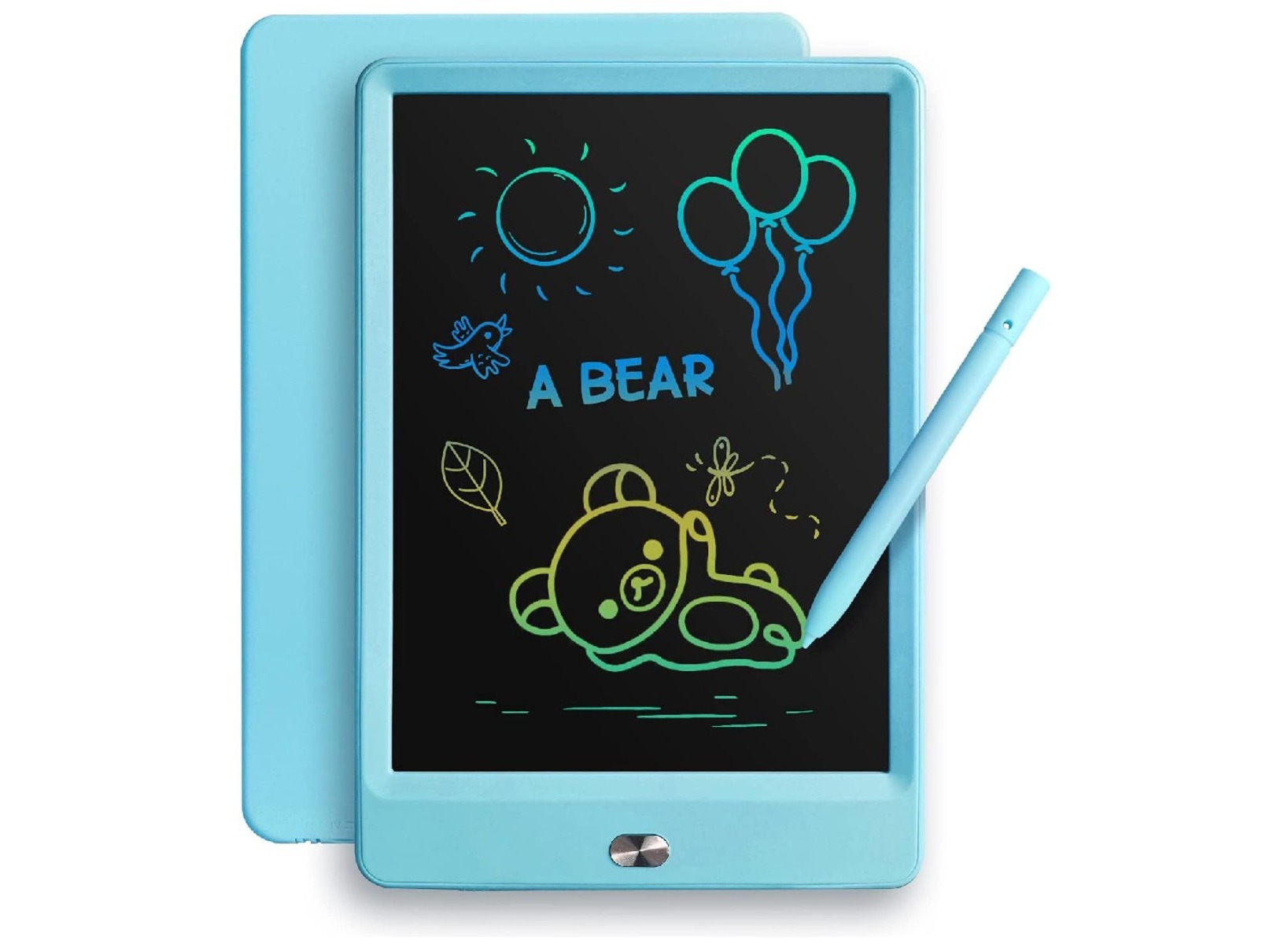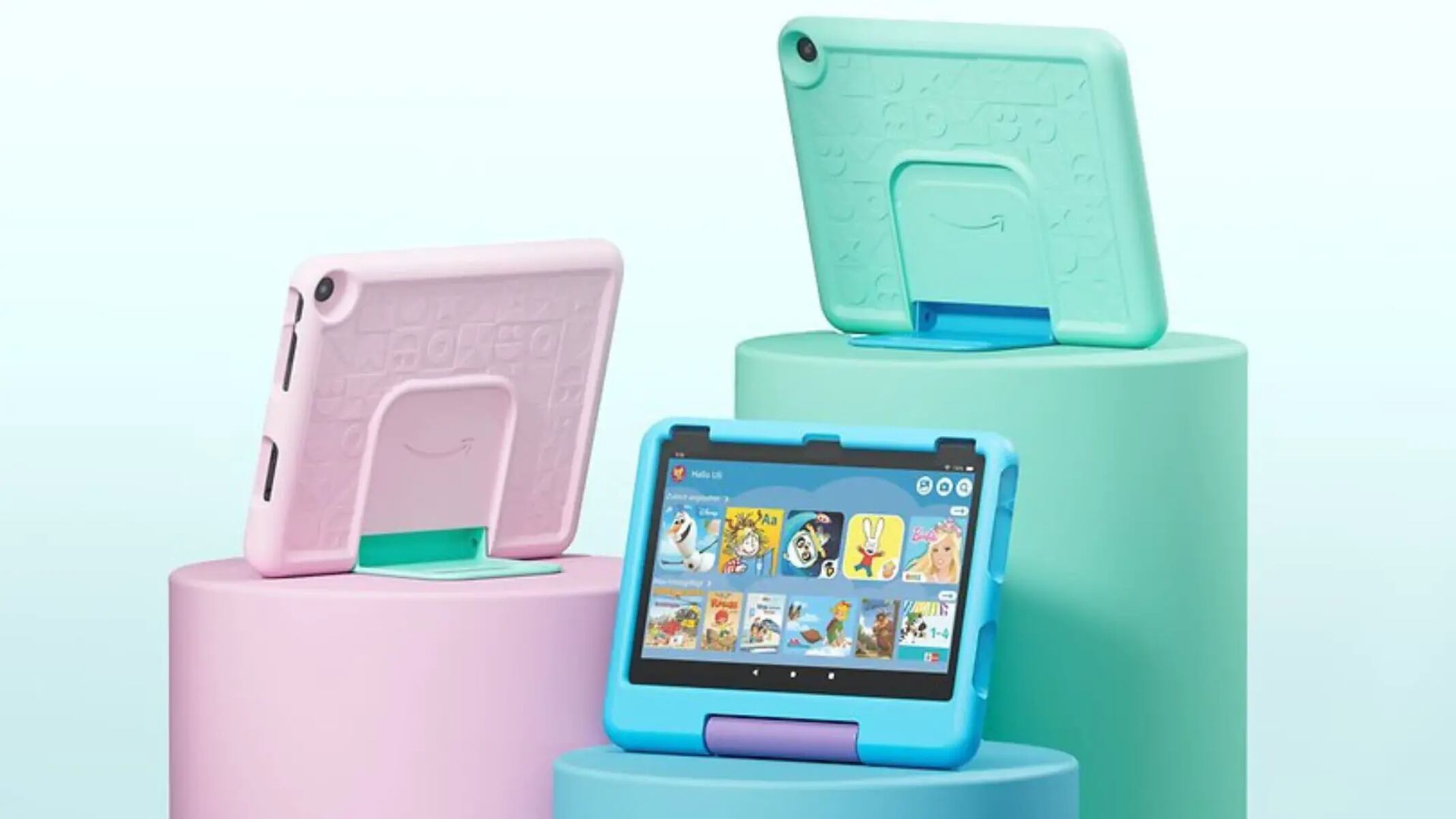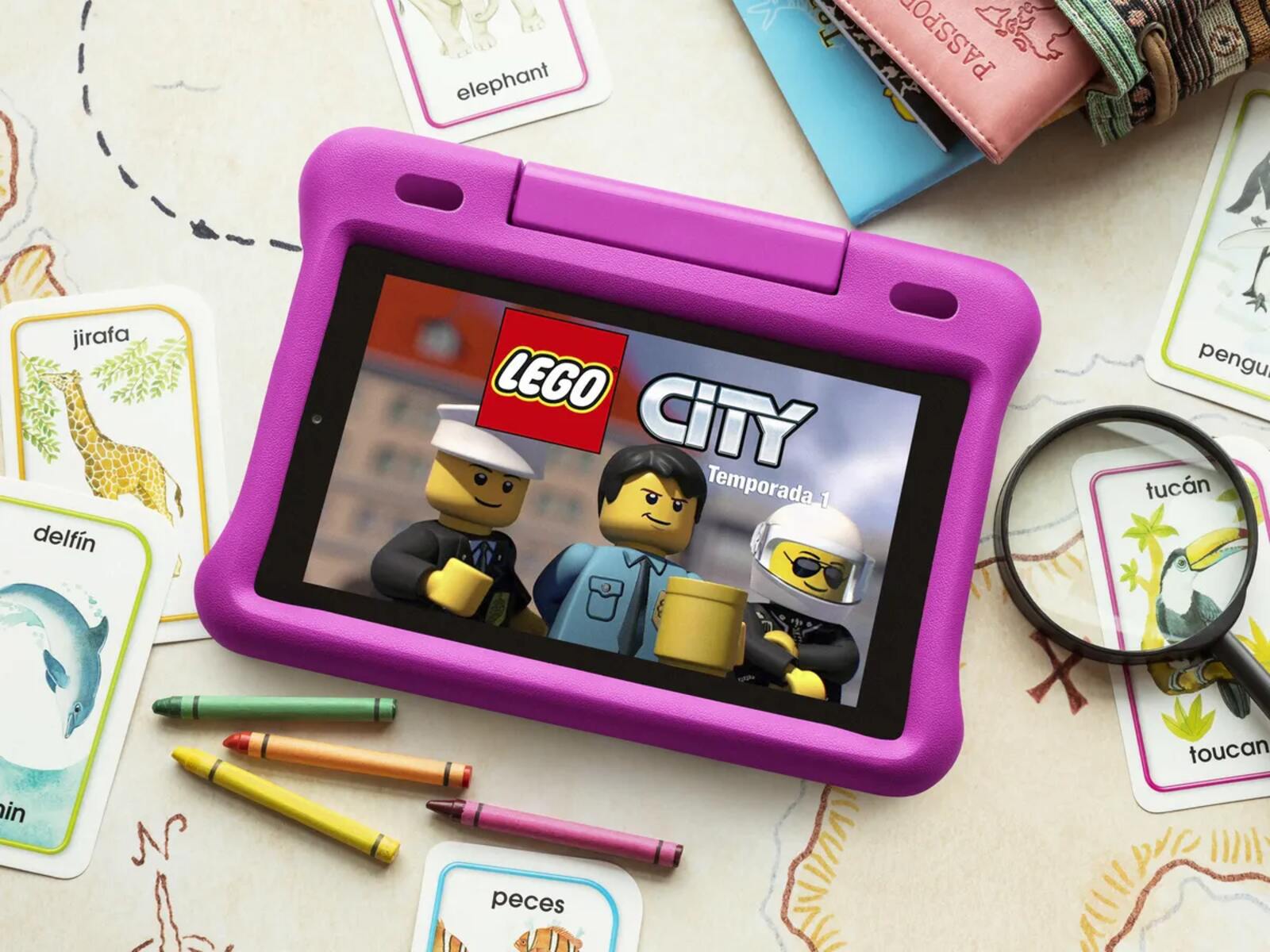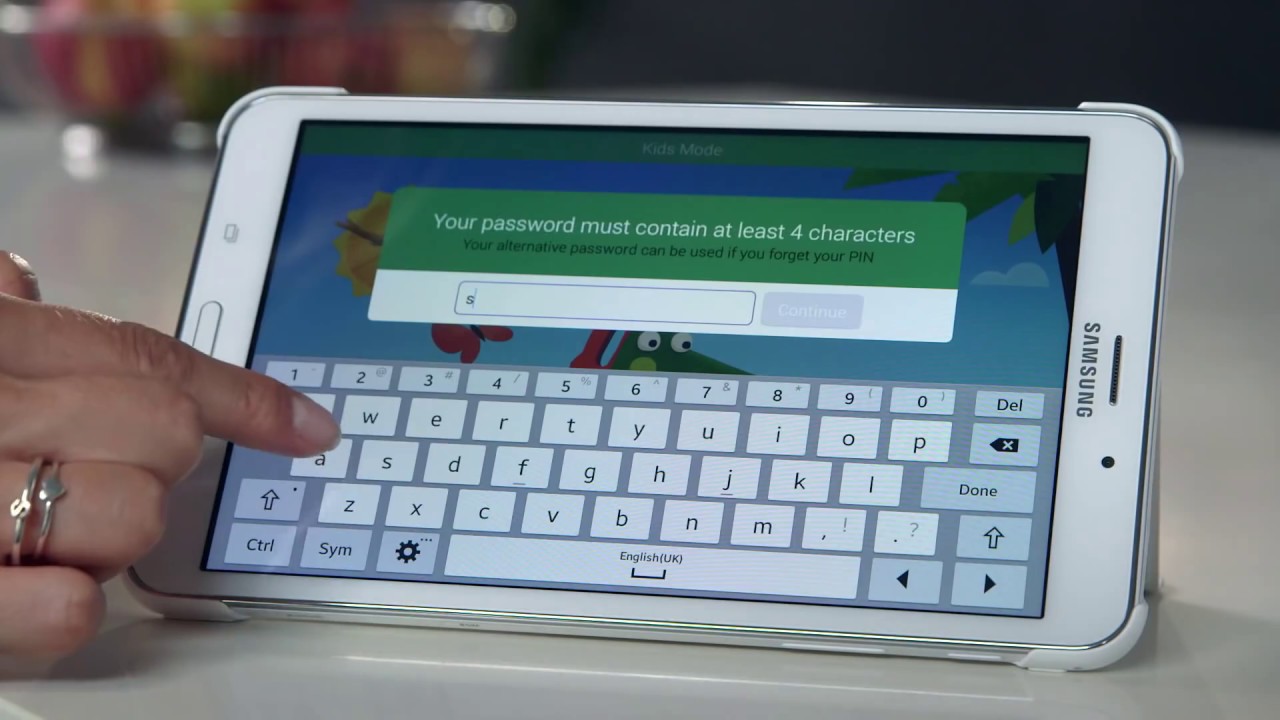Introduction
When it comes to choosing the best tablet for kids, there are several factors to consider. With so many options available in the market, finding the right tablet that meets the needs of your child can be a daunting task. The perfect tablet should not only be age-appropriate and durable, but also offer parental controls, educational content, long battery life, sufficient storage capacity, and a suitable screen size and resolution.
With the advancement of technology, tablets have become an integral part of our lives. They offer endless possibilities for learning, entertainment, and creativity. However, not all tablets are suitable for kids. Some may lack necessary safety features, while others may not offer enough educational content to engage young minds. Therefore, it’s crucial to carefully consider the different factors before making your decision.
This guide will walk you through the key factors to consider when choosing a tablet for your kids. By taking into account these factors, you can make an informed decision that ensures a safe, educational, and enjoyable tablet experience for your child.
Factors to Consider
When choosing the best tablet for kids, there are several important factors that you should take into consideration. These factors can greatly impact your child’s tablet experience and ensure that they have access to age-appropriate content while being protected from potential risks. Here are the key factors to consider:
- Age Appropriateness: The tablet you choose should be suitable for your child’s age and developmental stage. Younger children may benefit from tablets with simplified interfaces and pre-installed educational apps, while older children may require more advanced features and access to a wider range of content.
- Durability: Children can be rough with their belongings, so it’s important to choose a tablet that is built to withstand accidental drops and bumps. Look for tablets with sturdy construction and reinforced corners.
- Parental Controls: Parental controls are crucial for ensuring that your child has a safe and age-appropriate tablet experience. Look for tablets that offer robust parental control features, allowing you to set limits on screen time, restrict access to certain apps or websites, and monitor your child’s online activities.
- Educational Content: A good kid’s tablet should offer a wide range of educational content that is engaging and age-appropriate. Look for tablets that come pre-loaded with educational apps, games, and e-books that can enhance your child’s learning experience.
- Battery Life: Long battery life is essential, especially if your child will be using the tablet for extended periods. Look for tablets that offer at least 8-10 hours of battery life to ensure that your child can enjoy uninterrupted usage.
- Storage Capacity: The tablet should have sufficient storage capacity to accommodate apps, games, videos, and other content that your child may want to download. Consider tablets with expandable storage options or ones that offer larger internal storage capacities.
- Screen Size and Resolution: The size and resolution of the tablet’s screen can greatly affect your child’s viewing and reading experience. Opt for a tablet with a screen size that is comfortable for your child to hold and a resolution that provides sharp and clear images.
- Price: Set a budget for the tablet and look for options that fit within your financial limits. While it’s important to find a tablet that meets your child’s needs, it’s equally essential to consider the value for money.
- Brand Reputation and Support: Consider tablets from reputable brands that have a proven track record in producing quality devices for kids. Also, look for tablets that offer good customer support and warranty options.
- Additional Features and Accessories: Finally, consider any additional features and accessories that the tablet may offer. This could include a stylus for drawing, a protective case, or connectivity options like Wi-Fi and Bluetooth.
By carefully considering these factors, you can find the perfect tablet that meets your child’s needs, offers a safe and engaging experience, and provides educational content to help them learn and grow.
Age Appropriateness
One of the most important factors to consider when choosing a tablet for kids is age appropriateness. Different age groups have varying needs and developmental requirements, and it’s essential to select a tablet that aligns with your child’s age.
For younger children, typically between the ages of 2 to 5 years old, it’s beneficial to choose tablets that have a simplified interface and are specifically designed for early learning. These tablets often come with pre-installed educational apps, interactive games, and e-books that engage young minds and help them develop essential skills, such as early literacy, numeracy, and problem-solving abilities. Parental controls should also be robust to limit access to inappropriate content and ensure a safe browsing experience.
As children enter the elementary school years, they may require a tablet with more advanced features, such as the ability to download additional educational apps or access online resources for school projects and research. Look for tablets that provide a balance between entertainment and education, allowing your child to explore their interests while continuing to learn and develop new skills. Parental controls should still be in place to monitor internet usage and restrict access to inappropriate content.
For older children and teenagers, the tablet should offer more flexibility and functionality to support their growing independence. Alongside educational apps and games, these tablets should allow access to a broader range of age-appropriate content, including social media, video streaming services, and productivity tools. However, parental controls should remain in place to ensure responsible internet usage and protect against online risks.
Overall, selecting a tablet that is age-appropriate is crucial in providing an engaging and educational experience for your child. It’s important to find the right balance between age-appropriate content, parental controls, and the tablet’s features to ensure that your child can make the most of their tablet experience as they grow and learn.
Durability
When it comes to choosing a tablet for kids, durability is a key factor to consider. Children tend to be active and accidents can happen, so it’s important to select a tablet that can withstand the inevitable bumps and drops.
Look for tablets that are specifically designed for kids and are built with sturdy materials. These tablets often have reinforced corners and rubberized edges to provide extra protection against accidental falls. A robust construction will help ensure that the tablet can withstand everyday use and rough handling.
In addition to physical durability, it’s also important to consider the durability of the software and operating system. A tablet with a reliable and secure operating system will offer a smoother and more consistent experience for your child. Regular software updates should be available to ensure that the tablet remains secure and compatible with new apps and features.
It’s worth noting that some tablets come with protective cases or bumpers, which can provide an extra layer of protection. These cases are often made of shock-absorbent materials and can help minimize the impact of accidental drops.
Furthermore, waterproof or water-resistant tablets can be a great advantage, especially for young children prone to spills and accidents. These tablets are designed to withstand accidental spills, splashes, or even brief submersion in water without being damaged.
By choosing a durable tablet, you can have peace of mind knowing that it can withstand the rigors of daily use by children. This durability ensures that the tablet will last longer and provide a reliable and enjoyable experience for your child.
Parental Controls
When selecting a tablet for kids, one of the most crucial factors to consider is the availability of robust parental controls. Parental controls are essential for ensuring that your child has a safe and age-appropriate tablet experience, allowing you to have peace of mind while they explore and learn.
Parental controls provide you with the ability to set limits on screen time, restrict access to certain apps or websites, and monitor your child’s online activities. This ensures that your child is protected from inappropriate content and online dangers.
Look for tablets that offer a comprehensive range of parental control features. These features may include the ability to set time limits, schedule screen time, and remotely monitor and manage your child’s device. Some tablets also offer age-specific content filters that automatically block access to inappropriate websites or apps, ensuring that your child only has access to content that is suitable for their age group.
Additionally, some tablets provide the option to create multiple user profiles, allowing each child in your family to have a personalized and age-appropriate experience. This feature is particularly useful if you have children of different ages, as it allows you to tailor the tablet’s content and settings to suit each child’s individual needs.
It’s also important to choose a tablet that allows you to customize the level of parental controls based on your child’s maturity and developmental stage. As your child grows, their needs and capabilities will change, and having the flexibility to adjust the parental controls accordingly will ensure that they continue to have a safe and enjoyable experience on their tablet.
Remember that parental controls should not be seen as a replacement for parental supervision and open communication. While parental controls play a vital role in creating a safe tablet environment, it’s important to have ongoing discussions with your child about responsible technology usage and to monitor their activities regularly.
By choosing a tablet with robust parental controls, you can ensure that your child’s tablet experience is safe, age-appropriate, and aligned with your family’s values and rules.
Educational Content
When considering a tablet for kids, it’s important to prioritize the availability of educational content. A tablet that offers a wide range of educational apps, games, and e-books can greatly enhance your child’s learning experience and make their tablet time more productive.
Look for tablets that come pre-loaded with educational content or have access to app stores specifically curated for educational purposes. These tablets often offer a variety of interactive learning apps that cover subjects such as math, science, language arts, coding, and more. They may also include e-books and educational videos that can expand your child’s knowledge and foster a love for reading.
Consider the quality and diversity of the educational content offered on the tablet. Look for apps and games that are engaging, interactive, and aligned with educational standards. They should be age-appropriate and provide a balance between fun and learning. The content should also have appropriate levels of challenge to stimulate your child’s cognitive development.
Another important aspect to consider is the ability to customize the educational content based on your child’s skills and interests. Look for tablets that offer adaptive learning features, allowing the content to adapt and adjust based on your child’s progress. This ensures that the tablet provides tailored learning experiences, keeping your child motivated and engaged while allowing them to learn at their own pace.
Additionally, some tablets offer access to online educational resources, virtual libraries, and educational platforms that can further enrich your child’s learning experience. Consider tablets that provide seamless integration with popular educational platforms used by schools, as this can facilitate easier access to educational materials and resources.
By prioritizing educational content, you can ensure that your child’s tablet time is not only entertaining but also beneficial for their development. The right balance of educational apps and games can make learning enjoyable and help your child acquire and reinforce essential skills.
Battery Life
Another important factor to consider when choosing a tablet for kids is the battery life. The battery life of a tablet can greatly impact how long your child can use the device before needing to recharge it.
For kids who use their tablets for educational purposes, entertainment, or even to keep them occupied during travel, having a long-lasting battery is crucial. Look for tablets that offer a minimum of 8-10 hours of battery life, as this will ensure that your child can enjoy uninterrupted usage without constantly needing to recharge.
It’s also worth considering the type of activities your child will typically engage in on the tablet. Watching videos, playing graphics-intensive games, or running multiple apps simultaneously may drain the battery faster compared to reading e-books or using educational apps. Therefore, it’s important to select a tablet that provides sufficient battery life for the specific usage patterns of your child.
In addition to battery life, it’s helpful to consider the charging options and time required to fully recharge the tablet. Some tablets come with fast charging capabilities, allowing for quicker charging times and reducing waiting time for your child’s tablet to be ready for use. Others may include features such as wireless charging, which can add convenience and flexibility to the charging process.
It’s worth noting that the actual battery life of a tablet can vary based on factors such as screen brightness, volume level, and the apps or activities being used. It’s a good practice to adjust settings, such as screen brightness, to optimize battery performance and extend usage time.
By selecting a tablet with a long-lasting battery, you can ensure that your child can enjoy their tablet experience for extended periods without frequent interruptions for charging. This allows for uninterrupted entertainment and learning, whether at home, at school, or on the go.
Storage Capacity
Storage capacity is an important consideration when choosing a tablet for kids. The amount of storage available determines how many apps, games, videos, photos, and other files your child can store on the device.
When evaluating storage capacity, it’s important to consider the needs and usage patterns of your child. For younger children who primarily use educational apps and games, a tablet with lower storage capacity may be sufficient. However, as they grow older and their interests expand, they may require more storage space for additional apps, games, and multimedia content.
It’s worth noting that the operating system and pre-installed apps on a tablet consume a significant portion of the available storage. Therefore, it’s advisable to choose a tablet with ample storage capacity to ensure that your child has enough space for their needs. Consider tablets with a minimum of 16GB or higher if your child’s usage involves downloading a considerable number of apps or storing media files.
Some tablets offer the option to expand the storage through the use of a microSD card. This can be beneficial as it provides the flexibility to increase the storage capacity as needed, without having to replace the entire tablet.
When considering storage capacity, it’s also important to bear in mind the types of content your child will be storing. Videos, especially high-definition ones, take up more space compared to apps or e-books. If your child enjoys capturing photos or recording videos, you may want to choose a tablet with ample storage or one that offers cloud storage options for backup and easy access to their multimedia files.
By selecting a tablet with sufficient storage capacity, you can ensure that your child has enough room to store their favorite apps, games, and media files without constantly having to delete older content. This allows for a seamless and enjoyable tablet experience.
Screen Size and Resolution
The screen size and resolution of a tablet play a significant role in your child’s viewing and interactive experience. It’s important to consider these factors to ensure that your child can comfortably engage with the tablet’s content and have a visually pleasing experience.
The ideal screen size will depend on factors such as your child’s age, usage patterns, and personal preferences. For younger children, smaller screen sizes, typically ranging from 7 to 8 inches, may be more suitable as they are easier for little hands to hold and navigate. As children grow older, they may prefer larger screens, typically ranging from 9 to 10 inches, which provide a more immersive viewing experience.
In addition to screen size, the resolution of the display is equally important. A higher resolution means that images and text will appear sharper, making the content more enjoyable and easier to read. Look for tablets with at least HD resolution (1280 x 720 pixels) or higher, as this will provide a crisp and clear display.
Consider the types of content your child will be consuming. If they will watch videos, play graphics-intensive games, or read e-books, a higher resolution will enhance their viewing experience. This is particularly important for educational apps and content, as it can help promote better engagement and clarity of information.
It’s also worth considering the durability of the screen. Some tablets come with additional features to protect the screen, such as scratch-resistant materials or reinforced glass. These features can help minimize the risk of accidental damage and prolong the lifespan of the tablet.
Ultimately, choosing the right screen size and resolution for your child’s tablet will depend on their individual needs and preferences. It’s important to strike a balance between a comfortable viewing experience and a display that provides clear and sharp images.
By considering the screen size and resolution, you can ensure that your child has an enjoyable and visually engaging experience while using their tablet.
Price
Price is an important factor to consider when choosing a tablet for kids. Setting a budget will help you narrow down your options and find a tablet that meets your child’s needs without breaking the bank.
The price of a tablet can vary significantly depending on the brand, specifications, features, and overall quality. Higher-priced tablets often offer more advanced features, better build quality, and a wider range of content and apps. However, that doesn’t mean you need to spend a fortune to find a suitable tablet for your child.
It’s important to find a tablet that offers a good balance between affordability and functionality. Consider the specific requirements and expectations you have for the tablet. If your child only needs basic features and educational apps, a more budget-friendly option may suffice. However, if your child requires more advanced features or specific functionalities, you may need to invest in a higher-priced tablet.
Keep in mind that while price is an important factor, it is equally vital to consider the value for money. Cheaper tablets may offer limited features or compromise on build quality. On the other hand, higher-priced tablets may offer additional features, better performance, and better longevity.
It’s also worth considering any additional costs associated with the tablet, such as accessories or subscription fees for premium apps or content. These costs can impact the overall affordability and long-term usability of the tablet.
Research different brands and models within your budget range to find the best tablet that meets your child’s needs. Read reviews, compare specifications, and consider the reputation and customer support of the manufacturer.
By setting a budget and considering the value for money, you can find a tablet that provides the necessary features and functionalities for your child’s enjoyment and learning without straining your finances.
Brand Reputation and Support
When choosing a tablet for kids, it’s important to consider the brand reputation and the level of customer support provided by the manufacturer. Opting for a reputable brand can provide assurance in terms of product quality, reliability, and ongoing support.
Reputable brands have a track record of producing quality products and adhering to high standards of manufacturing. They invest in research and development to provide innovative features, durability, and user-friendly interfaces. Choosing a well-established brand can reduce the risk of encountering technical issues or encountering difficulties in finding compatible accessories or replacement parts.
Additionally, reputable brands often provide better customer support and warranty options. This is important as it ensures that any technical issues or concerns can be addressed promptly and efficiently. Look for brands that offer accessible customer support channels and a reliable warranty policy, ensuring that you have assistance in case of any problems or queries.
Explore customer reviews and feedback to gain insights into the experiences of other users with a particular brand or model. Reliable brands tend to have positive reviews and a loyal customer base, which can give you confidence in your purchasing decision.
Another advantage of choosing a reputable brand is the availability of software updates and compatibility with third-party apps and accessories. Established brands often provide regular system updates to enhance performance, security, and compatibility with new features or apps. This ensures that your child’s tablet remains up to date and can continue to support their needs as technology advances.
By choosing a tablet from a reputable brand, you can have confidence in the product’s quality, reliability, and ongoing support. This provides peace of mind and ensures a positive experience for your child, both in terms of the performance and longevity of the tablet.
Additional Features and Accessories
When selecting a tablet for kids, it’s worth considering the availability of additional features and accessories that can enhance your child’s tablet experience. These extras can provide added convenience, versatility, and enjoyment for your child.
Some tablets come with built-in features that can be particularly helpful for kids. For example, a tablet with a front or rear-facing camera can allow your child to capture photos and videos, fostering their creativity and enabling them to document their experiences. Some tablets may also have built-in speakers or headphone jacks, enabling your child to enjoy media content or engage in educational apps with clear and immersive audio.
Consider any additional connectivity options that the tablet may offer. Wi-Fi capability allows your child to connect to the internet, stream educational videos, and download new apps or games. Bluetooth connectivity opens up opportunities for connecting wireless accessories such as headphones, keyboards, or speakers, providing more flexibility in how your child interacts with the tablet.
Furthermore, explore the availability of specialized accessories specifically designed for the tablet. Protective cases or bumpers can provide added durability and protection against accidental drops or spills. Styluses can be beneficial for drawing or writing activities, providing a more precise input method for your child. Some tablets may also have compatibility with external storage devices, allowing your child to expand the storage capacity and easily transfer files.
Consider the availability of bundled accessories or accessory compatibility offered by the manufacturer. Some tablets may come with accessories included, such as styluses or protective cases. Others may have a wide range of compatible accessories available for purchase separately, allowing you to customize the tablet to suit your child’s needs.
It’s important to note that additional features and accessories may increase the overall cost of the tablet. Evaluate the value and necessity of these extras based on your child’s requirements and your budget. Prioritize the essential features and accessories that will enhance your child’s tablet experience without compromising their safety, education, or entertainment.
By considering the availability of additional features and accessories, you can customize and optimize your child’s tablet experience, catering to their individual needs and preferences.
Conclusion
Choosing the best tablet for kids requires careful consideration of several key factors. By taking into account factors such as age appropriateness, durability, parental controls, educational content, battery life, storage capacity, screen size and resolution, price, brand reputation and support, and additional features and accessories, you can find the ideal tablet that meets your child’s needs and provides a safe, educational, and enjoyable experience.
Ensure that the tablet is age-appropriate, offering content and features that align with your child’s developmental stage. Look for a durable tablet that can withstand the inevitable bumps and drops that may occur during everyday use. Robust parental controls are essential for keeping your child safe online and managing their screen time effectively.
Educational content should be a priority, with engaging apps, games, and e-books that promote learning and skill development. Consider tablets with long battery life to allow for extended usage without frequent recharging. Sufficient storage capacity ensures your child has enough room for apps, games, and multimedia content.
Choosing a tablet with an appropriate screen size and resolution enhances the viewing experience and readability of content. Price should be considered in relation to the features and functionality offered by the tablet, while brand reputation and support ensure reliability and access to customer assistance.
Lastly, additional features and accessories can add convenience and versatility to your child’s tablet experience. Consider options like cameras, connectivity options, and specialized accessories that enhance the tablet’s capabilities.
By carefully considering all these factors, you can choose the best tablet for your child and provide them with a valuable tool for learning, creativity, and entertainment.









